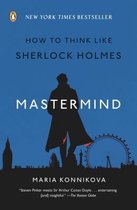
To get more specific, the microscope Holmes likely used known as the Powell & Lealand No.1, the design of which remained almost completely unchanged for the better half of the nineteenth century. In his paper “ The Art of Forensic Detection and Sherlock Holmes,” Ing deduced that when working at a micro-scale, Holmes would have most likely used a “10 power silver and chrome magnifying glass, a brass tripod base monocular optical microscope probably manufactured by Powell & Lealand.” The specific brands for these tools are never mentioned in any Holmes story, but Ing notes that these items were the most popular at the time.

By today’s standards (not to mention the fantastic machines used in television shows like “CSI”) these tools are not advanced, but in Victorian England they were incredibly precise and quite well made. In order to put these skills to use to find and decipher the clues that lead to his uncanny deductions, Holmes relied on the optical technology of the time: the magnifying glass and microscope. Robert Ing, has closely read Conan Doyle’s stories to craft a more specific list of skills that Holmes demonstrates a working knowledge of: chemistry, bloodstain identification, botany, geology, anatomy, law, cryptanalysis, fingerprinting, document examination, ballistics, psychological profiling and forensic medicine.

Forensic scientist and Holmes scholar Dr. But you don’t have to take Watson’s word for it. According to Watson, Holmes’s knowledge of botany is “variable”, his skill in geography is “practical but limited”, his knowledge of chemistry “profound”, and regarding human anatomy, his knowledge is “accurate.” The applied knowledge of these various sciences made “the science of deduction” possible. John Watson, A Study in Scarlet, Watson himself enumerates the skills, talents, and interests in which Holmes exhibited a useful capacity. Holmes was well-versed in forensic science before there was a forensic science to be well versed in. Though they often seem nearly mystical in origin, Holmes’s deductions were in fact the product of a keenly trained mind. Sherlock Holmes’s extraordinary talent for deduction has been well documented by Arthur Conan Doyle.

Basil Rathbone and Nigel Bruce as Holmes and Watson (image: )


 0 kommentar(er)
0 kommentar(er)
